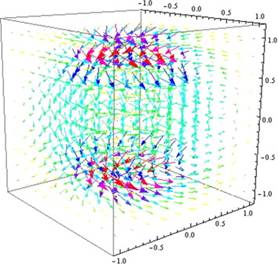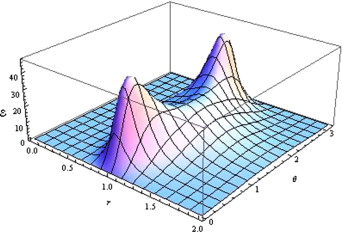Researchers at Institute of Modern Physics, Chinese Academy of Sciences (IMP) have explored the monopole solutions in CP1 model and restricted QCD, which may help us to understand the confusing problem, i.e. confinement, in non-perturbative QCD.
One of most attractive mechanisms of quark confinement in quantum chromodynamics is based on Meissner effect in dual color superconductor. However, the existence of the monopole condensation represents a puzzle in QCD which is intimately related with the problem of origin of the mass gap in QCD. Since singular Dirac and Wu–Yang monopoles was proposed, any finite energy monopole solutions in realistic physical theories of fundamental interactions have been unknown. All known finite energy monopole solutions (like ‘t Hooft–Polyakov monopole solution) require either introducing new particles or essential extension of the theories of fundamental forces.
Due to these above-mentioned situations, researchers at IMP studied the possible finite monopole solutions in QCD. They proposed a new type of regular monopole-like field configuration in quantum chromodynamics (QCD) and CP1 model. The monopole configuration can be treated as a monopole–antimonopole pair without localized magnetic charges. It is shown in Fig.1 and Fig.2. An exact numeric solution for a simple monopole–antimonopole solution has been obtained in CP1 model with an appropriate potential term. They supposed that similar monopole solutions may exist in effective theories of QCD and in the electroweak standard model.
The work has been published in: Physics Letters B 728 (2014) 650–657.

Fig.1. 3D stream vector plot of magnetic field lines of QCD in Cartesian coordinates (Image by IMP)

Fig.2. Energy density plot of monopole-antimonopole pair configuration in spherical coordinates, two localized maximum of energy density correspond to the location of monopole and antimonopole respectively(Image by IMP)

